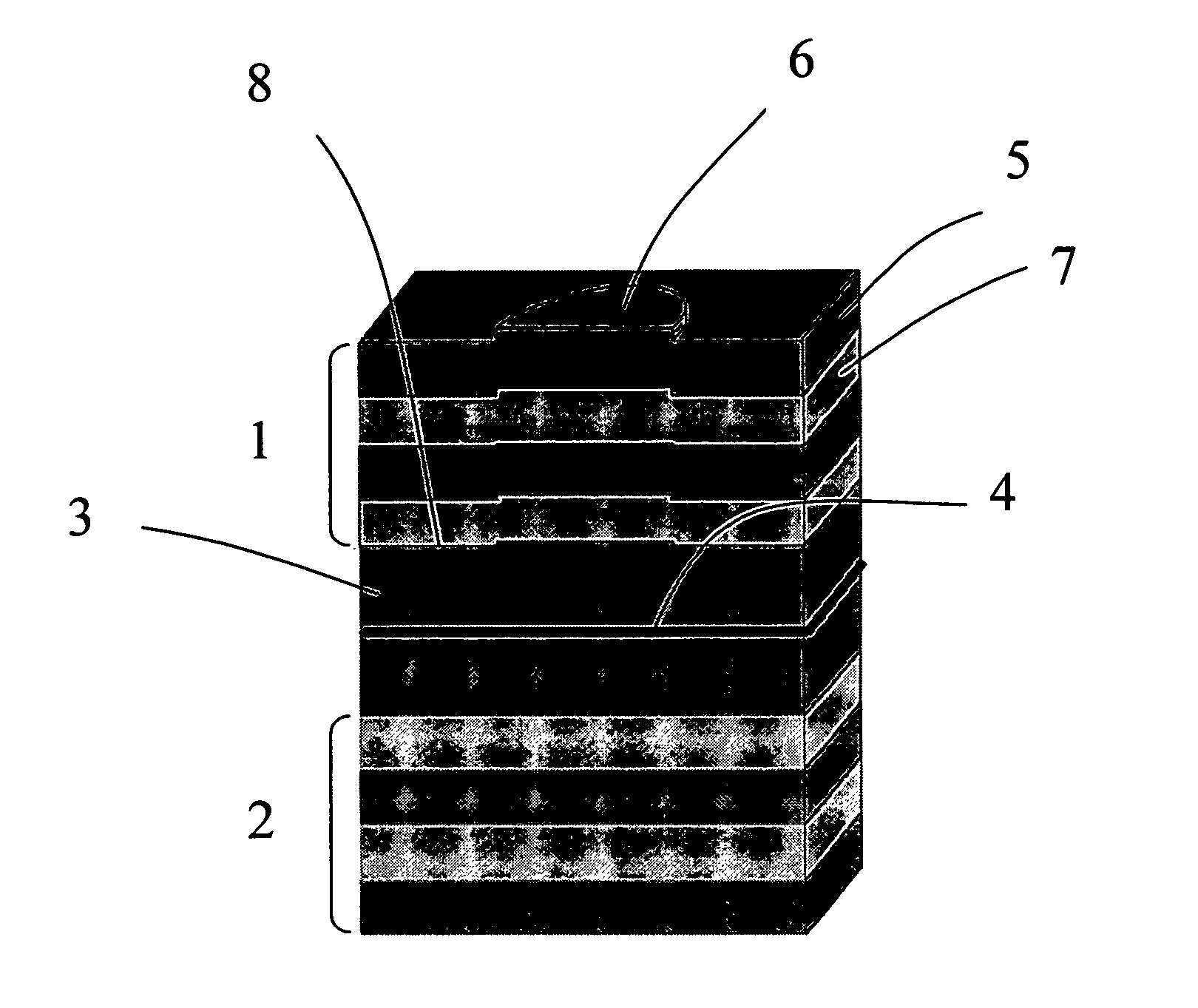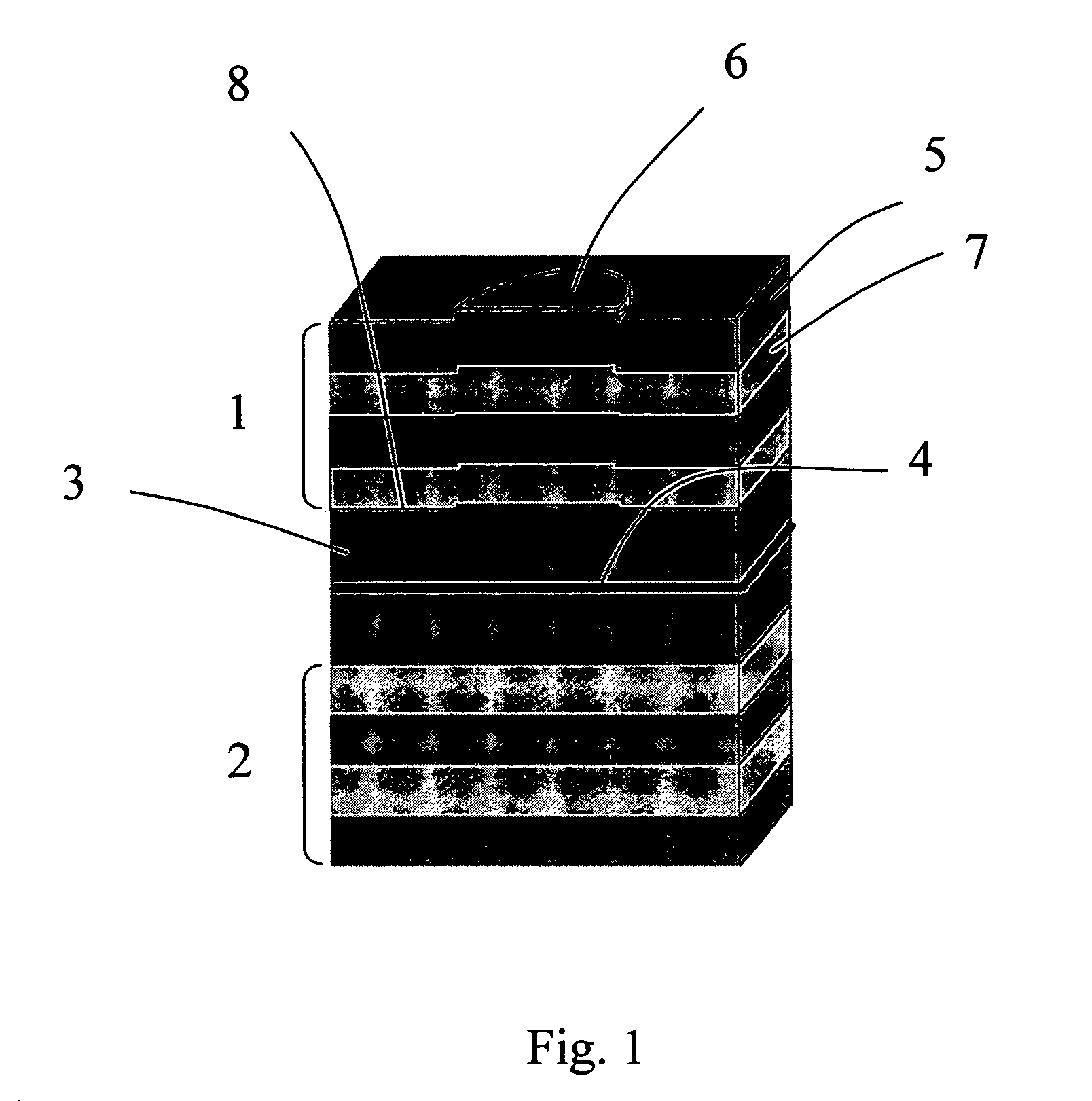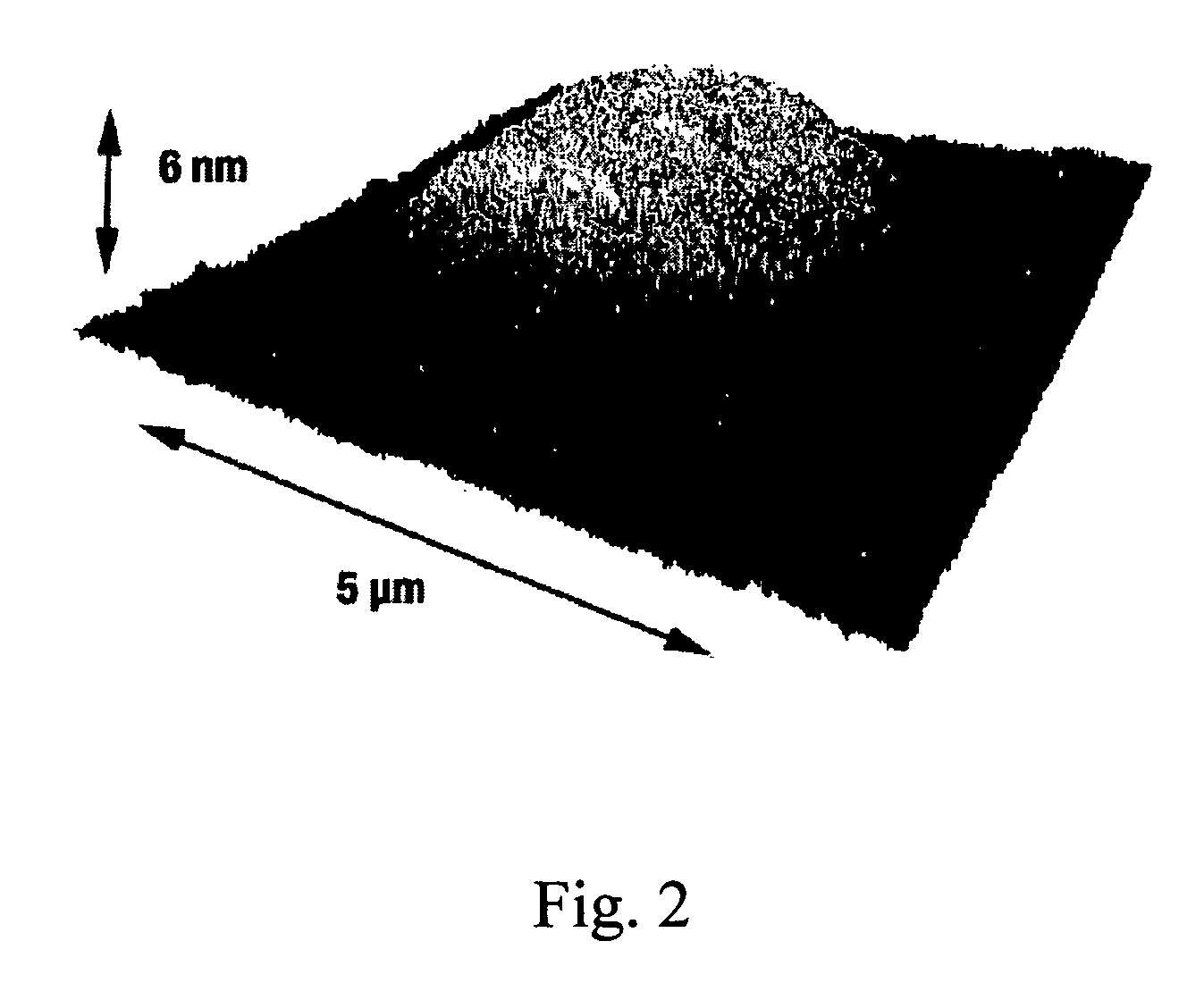Single photon source
a single photon source and photon source technology, applied in the field of optical communication devices, can solve the problems of poor collection efficiency, low repetition rate, and difficulty in fabricating arrays of multiple quantum dots precisely, and achieve the effect of improving the accuracy of the array
- Summary
- Abstract
- Description
- Claims
- Application Information
AI Technical Summary
Benefits of technology
Problems solved by technology
Method used
Image
Examples
Embodiment Construction
[0025]FIG. 1 shows an example of a microcavity comprising two Bragg reflectors 1, 2 formed of alternating layers 5, 7 of GaAs and AlAs. The Bragg reflectors 1, 2 are separated by two semiconductor layers 3 of GaAs that surround a single quantum well of In0.04Ga0.96As. Its fundamental energy level corresponds to a wavelength of 835 nm. The distance between the Bragg reflectors corresponds to this wavelength. Therefore, the formation of a polariton, i.e. the superposition of a photon and an exciton in the microcavity is granted. The semiconductor layers are sequentially grown on a substrate (not shown) using molecular beam epitaxy (MBE). For the purpose of illustration only a reduced number of the semiconductor layers of the actually grown microcavity and of the semiconductor layers forming the Bragg reflectors 1, 2 are shown. The Bragg reflectors each comprise a reflectivity of more than 99.5%. The microcavity can also include more than one quantum well, wherein the number of quantum...
PUM
 Login to View More
Login to View More Abstract
Description
Claims
Application Information
 Login to View More
Login to View More - R&D
- Intellectual Property
- Life Sciences
- Materials
- Tech Scout
- Unparalleled Data Quality
- Higher Quality Content
- 60% Fewer Hallucinations
Browse by: Latest US Patents, China's latest patents, Technical Efficacy Thesaurus, Application Domain, Technology Topic, Popular Technical Reports.
© 2025 PatSnap. All rights reserved.Legal|Privacy policy|Modern Slavery Act Transparency Statement|Sitemap|About US| Contact US: help@patsnap.com



